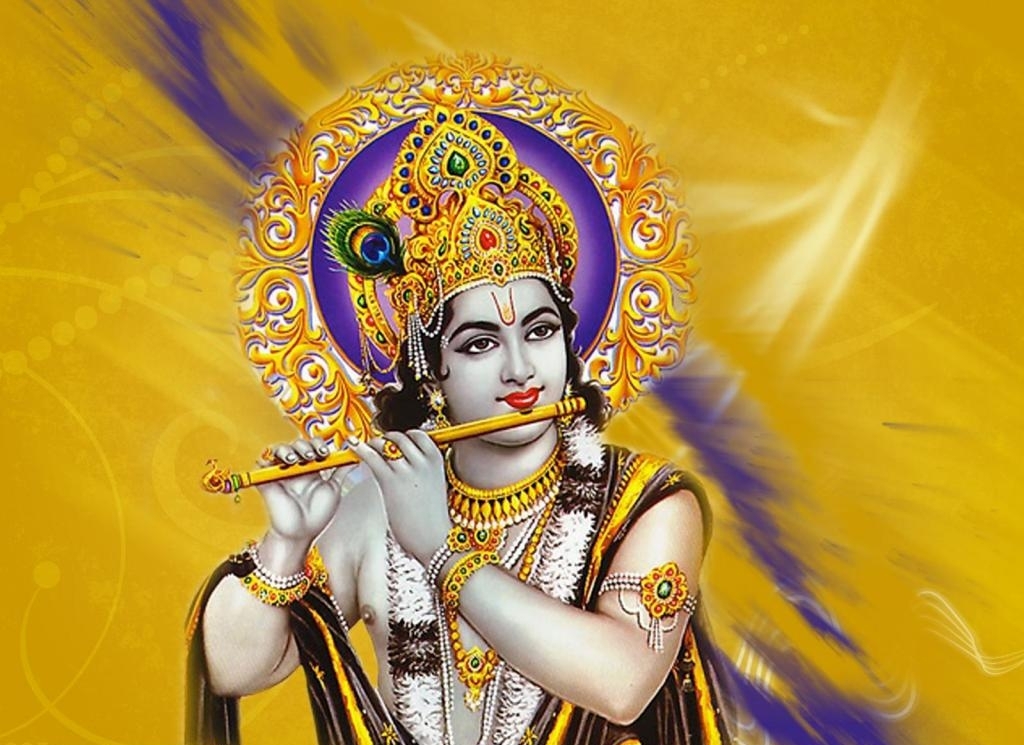Essence of Holy Geeta ( A Simple Summery of 18 Chapters)
By Prof. Rishabh Shastri
 Essence of Holy Geeta–
Essence of Holy Geeta–
A Simple Summery of 18 Chapters
Vishada(Grief)-Yoga--Facing the waiting army on the battlefield, the great warrior Arjuna sees all his close relatives, acharyas and friends gathered in armour on both sides to prepare for battle and look forward to sacrificing their lives. Exhausted by grief and sorrow, Arjuna became powerless, his mind became fascinated and he gave up his resolve to fight.
Sankhya-Yoga-- Arjuna surrendered to Lord Krishna as his disciple and began to give Arjuna advice to Arjuna by diagnosing the fundamental difference between the impermanent inanimate body and the eternal Chinmaya soul. Krishna explains the process of transmigration, the nature of selfless service to the Supreme Lord, and the characteristics of the self-realized man.
Karma Yoga-- In this inert world everyone has to be engaged in some kind of work. But action can bind all people to this world, but it can also free them from it. Without self-interest, by working for the purpose of pleasing God, man can be freed from the law of karma in response to his work and is able to acquire the theology of self and paramatman.
Gyana Yoga-- the chinmaya theory of the soul, the bhagavat-theory and the relation of God and the soul-all these unnatural theories are pure and liberating. This kind of knowledge is the result of selfless devotional action (karmayoga). The Supreme Lord has explained the long history of the Geeta, the purpose and significance of his descent from age to age in the inanimate world, and the need for the presence of the enlightened Guru.
Karma-Sannyasa-Yoga-- By performing all the duties in external judgment, but by renouncing the karma of them, the enlightened person attains purification by the fire of transcendental epistemology, resulting in peace, detachment, tolerance, chinmaya insight and pure bliss.
Dhyana (Meditation) Yoga --- The practice of Ashtanga Yoga through systematic meditation suppresses the mind and the senses and keeps the mind absorbed in the thoughts of the innermost Paramatman. As a result of this practice, the full contemplation of the Supreme Lord is attained.
Vigyana (Science)-Yoga-- Lord Krishna is the Supreme Being, the Absolute Cause of all causes and the life force of all matter. The advanced living beings surrender to Him in devotion, while the ungodly living beings scatter their minds in worship of other things.
Akshar Brahmah-Yoga-- By remembering the Supreme Lord Krishna for life and especially at the time of death, man can attain the Absolute Dhamma of Lord Krishna above the inanimate world.
Raja_Guhya-Yoga-- Lord Krishna is the Supreme Lord and the Supreme Being. Only through the unnatural Bhagavata-seva does the living soul become eternally connected with Him. As a result of reviving the pure devotion of man, it is possible to return to the absolute abode of Lord Krishna.
Vibhuti-Yoga-- the valour of the inanimate world or the world of the Chinmaya, Shree, Aaramvara, Utkarasha - all the perceptible things are only partial manifestations of the divine power and absolute auspiciousness of Sri Krishna. The ultimate cause of all causes, the refuge of all things and the supreme subject of all living beings in the form of Saratsara (Condensed form).
Vishwarupa-Dashana-Yoga--The Supreme Lord Krishna bestowed divine vision on Arjuna and revealed his eternal Vishwarupa to the public. In this way he undisputedly established his Suprimacy of immortal Sanatana Dharma (Theology). Lord Krishna has proved that his own beautiful human form is the original form of God. Only through pure Bhagavata-Seva is man able to attain the realization of this form.
Bhakti Yoga-- The best way to attain pure Krishnaprema in the world of Chimayee Bhakti Yoga or pure devotion is the best way for the purpose of Krishna. Those who are engaged in the development of this absolute path are endowed with divine qualities.
Prakriti-Purusha-Vivek (Nature-Man-Conscience) Yoga: - He, who can realize the difference between body, soul and Paramatma above both, is the one who is able to get rid of this inanimate world.
Gunatraya-Vibhaga-Yoga-- All living beings are under the control of this threefold nature of Sattva, Raja and Tama. Supreme Lord Krishna has explained the nature of these three qualities, their activities on us, how man transcends from them and the symptoms of man who is at an unnatural level.
Purushottama-Yoga-- The ultimate goal of Vedic knowledge is to liberate man from material worldly bondage and to realize Krishna as the Absolute Purushottama Bhagavan. The person who realizes the absolute nature of Lord Krishna, surrenders to Him and devotes himself to devotional service.
Daiva-Aasur-Sampada(Divinity-Wealth-Division) Yoga --- Those who acquire demonic qualities and live arbitrarily without following the scriptures, they attain inferiority and gradual worldly bondage. But those who are endowed with divine qualities and live a lawful life in accordance with the scriptural injunctions. By doing so, they gradually attain spiritual success.
Shraddhatraya-Vibhaga-Yoga-- Shraddha arises from the three qualities of inanimate nature and according to their characteristics there are three types of Shraddha. Those whose reverence is Rajasic and Tamasic, they produce only impermanent inanimate worldly fruits. On the other hand, according to the scriptural injunctions, the virtuous deeds performed according to the Aadi purify the heart and ultimately awaken devotion by guiding people to the path of pure devotion to Lord Krishna.
Moksha Yoga-- Krishna explains the meaning of renunciation and how the qualities of nature respond to human thoughts and activities. He explained the realization of Brahma, the greatness of the Bhagavad Geeta and the ultimate conclusion of the Geeta---the highest form of Dharma (Religion) is unconditional surrender to the Supreme Lord Krishna, which results in liberation from all sins, attainment of full knowledge and return to the eternal abode of eternal bliss.